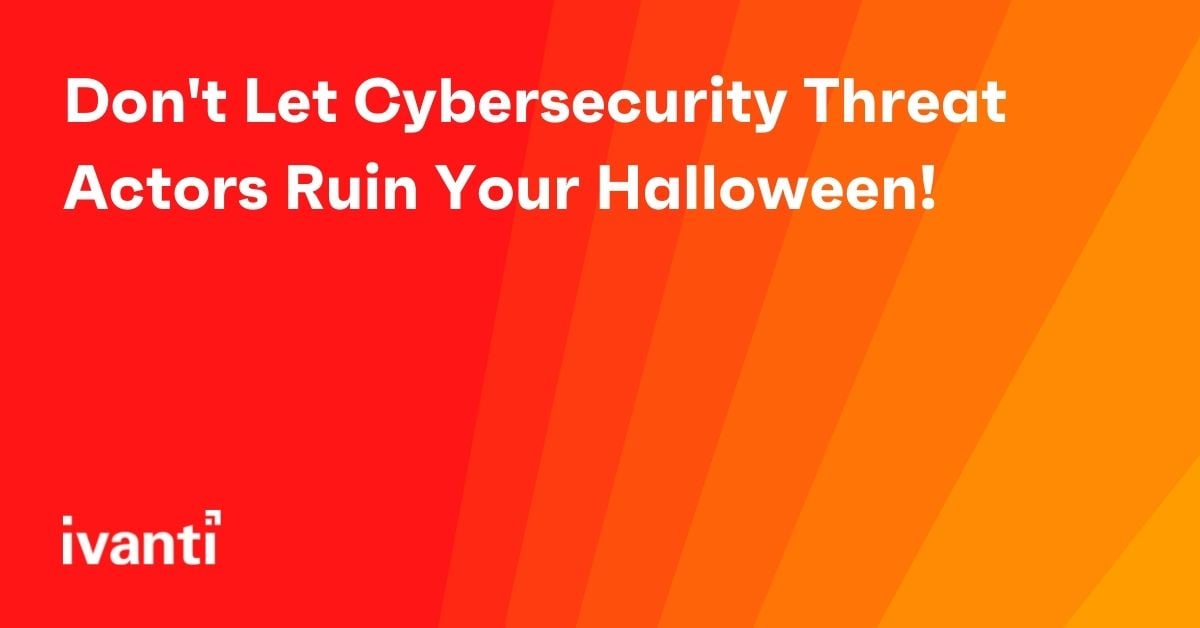Don't Let Cybersecurity Threat Actors Ruin Your Halloween!
It’s the scariest time of year. But forget about ghosts and goblins and zombies.
If you really want to be as scary as possible this spooky season, we know exactly what your costume should be and how you should decorate your yard.
Here are some hints:
- They look safe but they're super dangerous.
- You can't usually see them, but they're out to get you.
- They're coming after your grandmother and your bank manager alike, and they don't care who they hurt.
What are they?
Cybersecurity threat actors.
*Cue terrifying music.*
Before you roll your eyes, stick with us. This is worth a quick read.
The abrupt shift to the Everywhere Workplace has catalyzed a rapid rise in ransomware and phishing scams. Remote workers are doing more on mobile than ever before, and that has opened a massive vulnerability gap that’s all-too-easily exploited. Whether team members are accessing corporate data on personal devices or accessing personal data on corporate-owned devices, threats are omnipresent and getting more sophisticated by the day.
According to a recent survey by Ivanti, in the last year alone, 74% of respondents said their organizations have fallen victim to a phishing attack, and 58% said their organizations have been the victim of a ransomware attack.
Those are really scary numbers. And these attacks are coming as businesses are already struggling to adjust and stay afloat in an uncertain climate. It’s never a convenient time to deal with breaches and scams, but they feel even scarier this year.
How can you scare off bad actors?
This Halloween, if someone came to your door asking for candy, you might be more than happy to hand it out. But you probably wouldn’t let them all the way into your house and give them permission to freely look through your things and take whatever they wanted.
In fact, you probably wouldn’t let them past your doorstep at all unless you knew exactly who they were and what their intentions were. They might say all the right things and promise they knew your cousin’s hairdresser’s dog walker, but you still aren’t going to welcome them in unless you’re absolutely certain it’s safe.
That’s called zero trust. It’s not harsh; it’s practical. And it’s what every organization needs to be doing right now with their cybersecurity practices.
Users are too easy to manipulate. Anyone can pretend to be someone else (not unlike a Halloween costume). Phish a user, capture their identity (user and password) and impersonate them. Zero trust doesn’t care who you say you are. It mandates constant verification, with always-on monitoring and adaptive enforcement. Take the mask off and show me your face and I might trust you now that I have verified who you are.
Zero trust assumes bad actors are already in – or attempting to access – your network, and it can operate autonomously so there’s no need to stand guard at the door.
And of course, access is just one component of security. Forward-thinking organizations are adapting hyperautonomous platforms that can discover, manage, secure and service every endpoint, everywhere, even when those endpoints are remote.
That makes the Everywhere Workplace not only more secure but also more productive.
So instead of being afraid of a yard full of skeleton decorations, perhaps you and your organization should be afraid of a skeleton IT strategy that’s not fleshed out enough to handle the Everywhere Workplace.
Or better yet, you could choose action instead of fear. Everywhere security for the Everywhere Workplace is here. Make this spooky season as safe as possible, so you can sit back and eat candy in peace.

